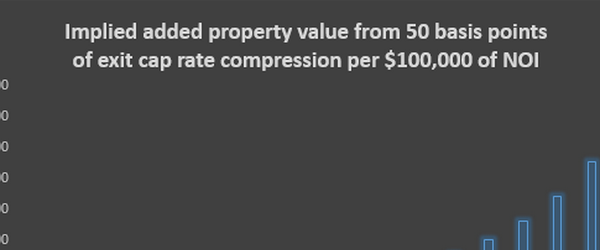Property return measures are very valuable tools for property investors in terms of evaluating the viability and profitability of potential property investment opportunities, thus allowing them to sort out potentially good investment opportunities from bad ones.
Besides return, investors are also interested in the risk that is associated with the opportunity evaluated in order to assess whether the expected return is in line with the risk that is being undertaken.
When looking at property investments, there are several property return measures that can be estimated. For this reason, investors and property professionals need to understand what these different measures represent in order to interpret them and evaluate them correctly.
Types of Property Return Measures
Periodic Return
Property return measures may differ in terms of the time interval they refer to. Periodic return is the expected return of an investment over a given period internal, which does not necessarily reflect the planned holding period of the investment. Typical property returns measures refer to one-year or to one-quarter intervals, and less often to one-month time periods.
Holding-Period Return
Holding-period property return measures calculate the return of a property investment over a particular time span, often referred to as investment horizon. Holding-period return calculations consider the expected resale (reversion) price of the property at the end of the investment horizon and, therefore any capital gains or losses that the investor may realize upon termination of the investment. These measures take also into account any potential fluctuations in the net income of the property.
Income Return
Income return is the return associated with the income earned by the property. The income measure that is used typically for the calculation of the income return in the case of property investments is the net operating income or the NOC as here. The calculation of the income return does not take into account any changes in the property value over the period for which the return is calculated.
Appreciation Return
Appreciation return measures actually the change in value (reduced by the expected sales costs) in percentage terms over the period for which the return is calculated. When calculating the holding-period return the cumulative appreciation return over this period measures the percentage change in value at the end of the holding period in comparison with the acquisition price, adjusted accordingly to reflect the corresponding return over the period for which it is expressed (annual, quarterly, etc.).
Total Return
Total property return measures take into account both the income and appreciation return. The National Council of Property Investment Fiduciaries (NCREIF), the major organization processing data and producing performance measures for the institutional property investment community in the United states, estimates periodic total return as the sum of income return and appreciation return.
Before-Tax Return
Property return measures may differ in terms of whether income/corporate taxes are taken into account. As the term indicates, before-tax property return measures are estimated without taking into account any income/corporate taxes that the owner may have to pay in association with income earned by the property (property taxes though are taken into account). However, it is more typical in the property investment industry to estimate after-tax return measures, especially when it comes to estimating the total expected return. The most common before-tax measure is the income return, as it is calculated using the property’s net operating income that does not take into account any income tax payments, as well as other expenses such as capital expenditures, leasing commissions and debt service payments, if the property is burdened with a loan.
After-Tax Return
After-tax property return measures calculate investment return using the after-tax and net of debt-service (if there is a loan involved) cash flows of the property. As the name indicates, these cash flows are calculated taking into account any income taxes (and deductions) in association with income earned by the property, as well as any payments to service any loans associated with the property. The most common practice in the property investment community is to estimate after-tax returns. Also in the case of holding-period return measures any taxes on potential capital gains at the termination of the investment need to be deducted as well.
Return on Equity
Return on equity is the return to the investor’s capital used in acquiring the investment. If no borrowing is used then the investor’s capital or equity will include all acquisition and pre-acquisition costs (legal, market study, valuation and any other due diligence costs associated with the purchase of the property). If borrowing is used then the investor’s equity will be a portion of this amount. When borrowing is used then the return on equity requires a Leveraged Return calculation that will take into account the effect of borrowing on property cash flows. If borrowing is not used, the investor’s return on equity will be equal to what is referred to as the unleveraged return, the calculation of which assumes no borrowing on the part of the investor. The most commonly used holding-period return-on-equity measure is the so called Internal Rate of Return (IRR).
Unleveraged Return
Unleveraged return is the return of a property investment assuming that the investors uses its own money to finance any capital needs for the acquisition of the property as well as during the holding period of the investment.
Leveraged Return
Leveraged return is the return of a property investment when borrowing is used to finance the acquisition of the property or any other capital needs in association with the operation, renovation or modification of the property. The leveraged return represents the return on the equity capital contributed by the investor. Positive leverage is the term used to describe the case in which the use of borrowing contributes to a higher return on capital compared to the return that would be obtained without borrowing, while negative leverage refers to the case that the effect of borrowing reduces the return on capital.




































Comments